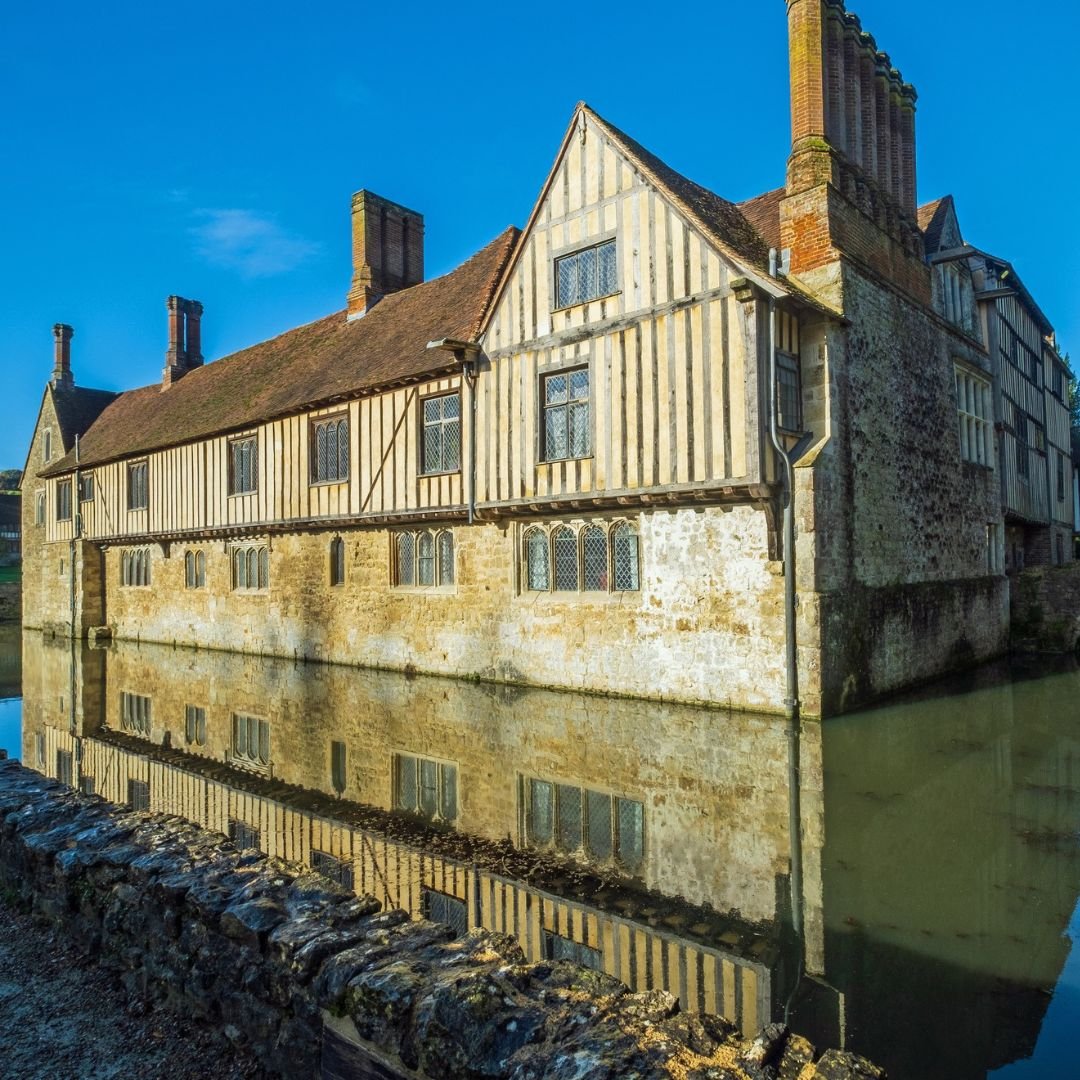Ightham Mote, Kent: One of The Oldest Medieval Manor Houses to Survive in England
Dating from around 1320, Ightham Mote in Kent is one of the oldest medieval manor houses to survive in England.
Previous owners have included medieval knights, a courtier to King Henry VIII and high society Victorians.
A beautiful moat surrounds all four wings of the house, crossed by four bridges, which in turn is built around an open courtyard.
The building was described by Nicholas Pevsner as ‘the most complete small medieval manor house in the country’.
The original 14th-century house was composed simply of a great hall with a cluster of other domestic buildings and one bridge giving access on the west range.
By the 15th century, there were four wings, and a second bridge on the northwest range.
In the 16th century, a grand Gatehouse Tower was added on the west range.
Once you enter the impressive courtyard, centuries of history and personalities stand before you - including half-timbered walls and mullioned windows.
You’ll also be able to spot the grand Grade I listed Victorian dog kennel, built in 1890 by Sir Thomas Colyer-Fergusson, the only Grade I listed dog kennel in Britain!
At the centre of the house, which contains more than 70 rooms, stands the Great Hall.
Once a place of feasting and celebrating, magical medieval carvings of musicians and performers adorn the walls.
The hall is framed with Tudor barge boards that are beautifully carved with leaves, vines, and floral emblems including royal Tudor symbols.
Within, the Great Hall is a superb room, with a high, vaulted ceiling and lovely panelling, the work of Victorian architect Norman Shaw.
The impressive vaulting is supported on cunningly carved corbel figures.
Highlights on the second floor of the house include the Old Chapel, built above the Crypt, and the New Chapel, built around 1480.
This New Chapel is a wonderfully panelled chamber with carved box pews, which also features a 16th-century Spanish cross.
If you look up, there’s a spectacular, painted 16th century barrel-vaulted ceiling.
Here there are Tudor symbols everywhere, including red roses, the Beaufort portcullis, and the castle representing Henry VIII's first wife, Catherine of Aragon.
Facing the west front, well away from the moat, is a lovely row of half-timbered cottages, which date to 1475.
These were used for stabling and other work purposes, but in the Victorian era they were converted into staff quarters.
Ightham Mote bears few external signs of change in architectural style, this is partly due to the modest ambitions of its successive owners, who expanded the house as their needs dictated.
The earliest recorded owner is Sir Thomas Cawne, who fought in France with Edward the Black Prince and who acquired the Mote in the 1360s.
Ightham Mote had several illustrious owners through the subsequent centuries, including Sir Richard Clement (d. 1538).
Clement was Sheriff of Kent and a courtier at the courts of Henry VII and Henry VIII.
Richard Clement, an ambitious landowner, worked his way up to become “gentleman of the household” and bought Ightam Mote for £400.
Not only had he made money by working for the king,, he also had the good fortune to marry a rich, elderly widow called Anne Whittlebury.
A later owner was Sir William Selby, who also served as Sheriff of Kent. Selby is buried at Ightham church, along with his wife Dorothy, both of whom have very grand tombs, well worth a short trip to see.
Dorothy Selby was one of Elizabeth I’s ladies in waiting and was renowned for her needlework.
Her husband, Sir William, was a soldier who, as Gentleman Porter of Berwick-upon-Tweed, was one of the first officials to welcome James Stuart to England as its new king in 1603.
The last owner of the manor was Charles Robinson. When he died in 1985 he donated the house and estate to the National Trust.
In 1989, the National Trust began an ambitious conservation project that involved dismantling much of the building and recording its construction methods before rebuilding it.
During this process, the effects of centuries of ageing, weathering, and the destructive effect of the deathwatch beetle were highlighted.
The project ended in 2004 after revealing numerous examples of structural and ornamental features which had been covered up by later additions.
There are various dodgy tales of ghosts associated with Ightham Mote too, including one of a seated female skeleton found behind a bricked-up door during renovations in 1872.
Beyond its historical walls, Ightham Mote's beauty extends into its meticulously manicured gardens.
The tranquil surroundings, adorned with vibrant blooms and serene ponds, offer visitors a peaceful retreat.
The gardens, designed in various styles spanning different periods, invite exploration and contemplation, creating an idyllic escape from the bustling outside world.
Nestled within a hidden valley, a narrow stream runs through the grounds, supplying two lakes and the moat.
It tumbles down two feature cascades on its journey through the garden.
Other natural springs have been tapped to supply the four small, fountain pools and several open channels, which add to the atmosphere, charm, tranquillity and variety of the garden.
The medieval manor has raving reviews on TripAdvisor.
A recent visitor said: “Absolutely brilliant, a well hidden little gem. The staff were incredibly friendly. It's worth joining the National Trust just to visit this place. Very pretty, and peaceful.”
Another person added: “Lots of interest in the carving, the insight into life and priorities of owners in times very different to our own. Something new with every visit despite it having been there all along.”
You can book tickets via the National Trust website.
If you enjoyed this blog post, please follow Exploring GB on Facebook for daily travel content and and inspiration.
Don’t forget to check out our latest blog posts below!
Thank you for supporting Exploring GB.



















